
In today’s fast-paced world, selecting the right cellphone can seem overwhelming, given the vast array of smartphones and mobile devices available. This comprehensive guide aims to clarify the process of choosing a cellphone by emphasizing your individual needs and preferences. Whether you’re looking for a premium model like the Apple iPhone 15 Pro, which typically exceeds $1000, or a budget-friendly option such as the Google Pixel 7A, understanding the elements that make a cellphone suitable for you is crucial. Throughout this guide, we’ll cover key factors, including performance, camera capabilities, and expert recommendations on how to choose a cellphone that’s tailored to your lifestyle.
Key Takeaways
- Understand the distinction between premium and budget options when choosing a cellphone.
- Evaluate essential features like screen size, processor performance, and battery life.
- 5G technology is becoming increasingly relevant; consider it in your purchasing decision.
- Camera performance is paramount for many users; ensure it meets your photography needs.
- Storage capacity should reflect your usage; aim for higher storage if you use many apps or media.
Understanding Your Needs and Preferences
Choosing the right cellphone involves a deep understanding of your personal cellphone needs and smartphone preferences. Different individuals have unique requirements that must be prioritized before making a purchase. For instance, the screen size is vital for those who enjoy gaming or watching videos. A larger display may enhance the experience significantly.
Camera quality matters greatly if photography is a priority. Advanced camera systems can elevate the quality of your images, making them worthy of sharing on social media or preserving family memories. On the other hand, for users focused primarily on basic functionality, mid-range options with decent cameras may meet their expectations sufficiently.

Battery life plays a crucial role in cellphone usability for many. Regularly using demanding apps can drain batteries quickly, making it essential to select a device that can keep up with your usage habits. A long-lasting battery reduces the inconvenience of frequent recharging, allowing for more uninterrupted connectivity.
Whether you are giving a child their first cellphone or upgrading your own, determining how to choose a cellphone requires considering various factors, including maturity level, responsibility, and family needs. Smartwatches with limited features or basic phones can be great starting points for a child’s first device, providing essential functions without overwhelming them.
Ultimately, identifying these needs sets the foundation for a more effective decision-making process. By aligning your choices with your lifestyle and preferences, you can enhance your overall cellphone experience.
Exploring Different Types of Mobile Devices
The landscape of mobile devices continues to expand, encompassing a variety of styles designed to cater to diverse needs. Smartphones lead this evolution, boasting features and capabilities that often surpass those of traditional computers. Currently, there are over 3 billion smartphone users globally, underscoring their significance in daily life.
Tablets provide a larger canvas for tasks that demand more screen real estate, enhancing productivity and entertainment. These devices often feature longer battery life, appealing particularly to those who frequently use mobile applications for work or leisure. Tablets bridge the gap between laptops and smartphones, offering a unique solution for those seeking greater functionality in a portable form.
Wearables are another emerging category that blends technology seamlessly into daily routines. Devices such as smartwatches like the Apple Watch and Fitbit have transitioned from simple fitness trackers to integral elements of health monitoring. They allow users to receive notifications, track fitness activities, and even monitor health metrics, making them popular among both casual users and professionals alike.
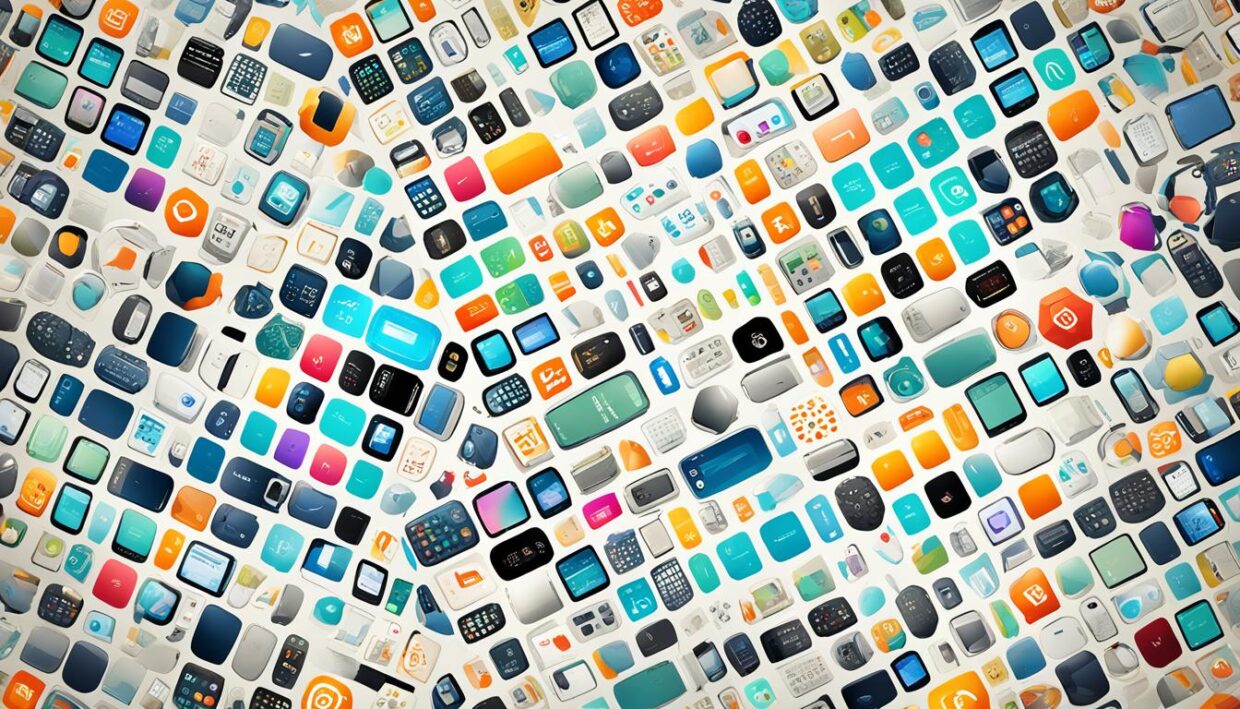
Wearable technology is transforming into essential health devices, providing doctors with tools to distribute to patients for continuous health monitoring.
Each of these types of mobile devices serves unique functions and appeals to different preferences:
| Device Type | Key Features | Ideal Users |
|---|---|---|
| Smartphones | Versatile functionality, internet connectivity, vast app ecosystem | General consumers, professionals |
| Tablets | Larger display, longer battery life, enhanced productivity | Students, business professionals |
| Wearables | Health tracking, notifications, integrated fitness apps | Fitness enthusiasts, health-conscious individuals |
Understanding the distinct types of mobile devices enables consumers to make informed choices that align with their individual lifestyles and requirements. The continuous advancements in technology promise to enhance functionality and user experience across all categories of mobile devices.
Premium vs. Budget Cellphones
Choosing between premium cellphones and budget smartphones involves understanding the differences in their features and cost of cellphones. Premium phones often come equipped with high-end camera systems, advanced processors, and premium build quality. These devices utilize processors with up to eight cores and higher clock speeds, leading to superior performance. For example, flagship phones may use high-tier processors like Qualcomm’s Snapdragon 8 Series, providing enhanced gaming performance.
In contrast, budget smartphones typically feature processors with between four to eight cores but operate at lower clock speeds, focused on efficiency rather than sheer power. Despite this, many budget devices still manage impressive performance suitable for everyday tasks at a fraction of the price of premium models.
When it comes to camera capabilities, premium cellphones often have multiple lenses, including ultra-wide and telephoto options, allowing for versatile photography. The graphics processing unit (GPU) in these phones is also generally more powerful compared to those found in budget smartphones, further improving image quality and gaming experiences.
A notable distinction is found in additional features such as water resistance and NFC, which are more readily available in premium devices. Many budget smartphones are equipped with basic functionalities, which may not include advanced specifications like water-resistant ratings or wireless charging options. Moreover, while premium devices may lack a 3.5mm headphone jack, pushing for wireless audio solutions, this is often not an issue in budget offerings.
The cost of cellphones plays a significant role in this comparison. Premium phones range from $700 to $1,500, while budget devices can be found for as little as $100, demonstrating a vast disparity. This price difference often influences purchasing decisions, especially when users weigh features against their budgets.
In considering which type of phone to purchase, it’s essential to reflect on personal needs and desired features. Both premium cellphones and budget smartphones have their merits, making it vital to choose a device that fits your lifestyle and requirements.

Key Features to Consider in a Cellphone
When selecting a cellphone, understanding the essential phone features that enhance user experience becomes crucial. Each user has different needs, making it important to prioritize according to personal preferences. Here are several key features that should guide your decision.
- Camera Quality: The impact of camera quality cannot be overstated. While hardware specifications such as sensor size are important, software capabilities play a critical role in producing excellent photos.
- Processor Speed: Look for smartphones with a solid processor to ensure smooth performance. For casual users, AnTuTu benchmark scores around 300K–500K suffice, but gamers may require scores of 700K or higher.
- Battery Life: A battery capacity of at least 5000mAh is recommended, especially for power users. Fast charging capabilities of 25W or higher can also enhance daily convenience.
- Display Quality: An ideal smartphone typically features a 5.5 – 6-inch HD or QHD display. Additionally, a 120Hz refresh rate provides smooth and vibrant visual experiences.
- RAM and Storage: For an average user, 2 GB RAM with 16 GB ROM is satisfactory. However, those who multitask or store large files will benefit from 6 GB RAM and up to 256 GB storage options.
- Durability and Protection: Consider models with Gorilla Glass 5 for display protection. Water resistance is another feature that can prolong the lifespan of a smartphone.
- Security Features: Look for biometric sensors that offer enhanced security. Clean software interfaces like stock Android contribute to a smooth user experience.
- Additional Features: Features like NFC for wireless payments and the availability of a headphone jack may also enhance usability.
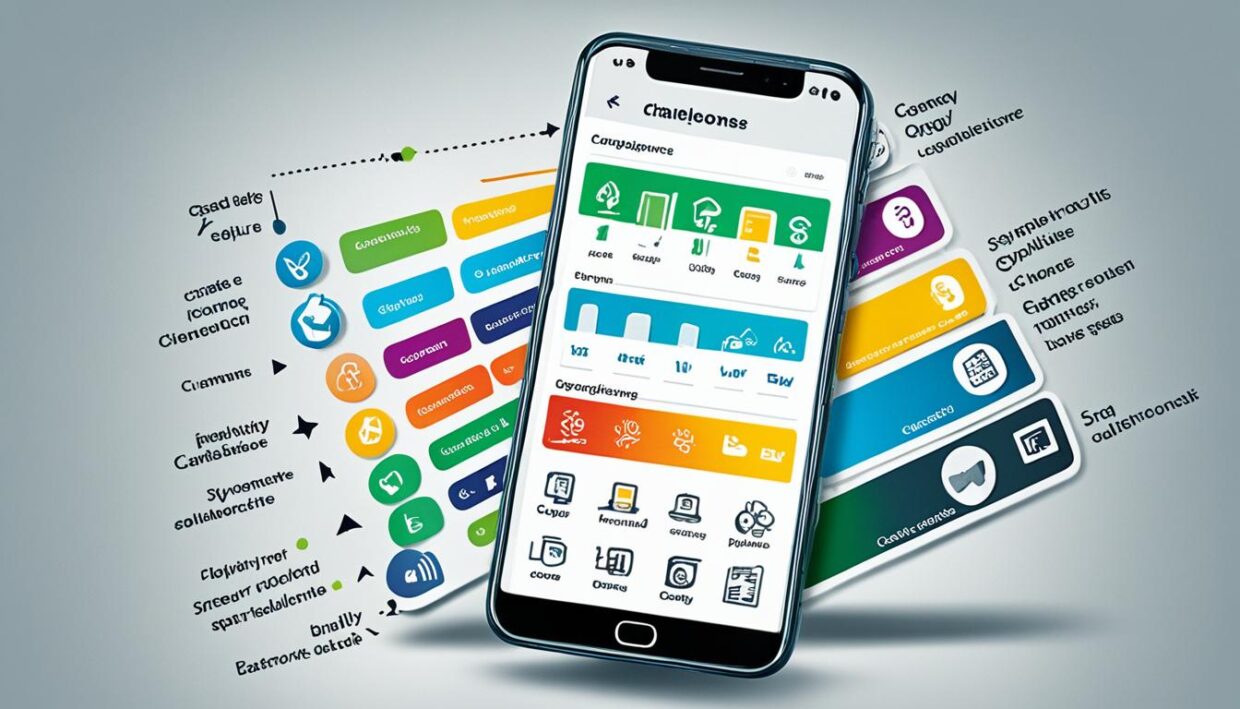
Each of these cellphone features impacts the overall usage experience. As smartphones continue to evolve, consumers should weigh these specifications carefully to choose a device that aligns with their lifestyle and usage needs.
| Feature | Satisfaction Level | Recommendation |
|---|---|---|
| Camera Quality | High | Focus on software optimization |
| Processor Speed | High for Heavy Users | Above 700K AnTuTu score |
| Battery Life | Essential | Minimum 5000mAh |
| Display Quality | Very Important | 5.5 – 6 inch, 120Hz |
| RAM & Storage | Moderate | 6GB RAM, 256GB Storage |
| Durability | High | Gorilla Glass 5, Water Resistance |
Choosing Between iPhones and Androids
The landscape of mobile technology often leads users to deliberate on iPhones vs. Androids. Understanding the distinctions in smartphone operating systems can be enlightening. Each platform has its unique strengths and weaknesses.
Apple’s iPhones provide a seamless experience, especially for users who own multiple Apple devices. The integration among products like MacBooks, iPads, and the Apple Watch simplifies daily tasks, showcasing the fluidity of using iOS. Additionally, all iPhones typically receive software updates for about six to eight years, ensuring users have access to the latest features and security enhancements.
On the other hand, Android users enjoy a broad spectrum of choices. With over 3.5 million apps available on Google Play, compared to 1.6 million on the Apple App Store, the flexibility of app availability and installation from third-party sources is a hallmark of this platform. Budget-conscious users can find Android devices as low as $100 or opt for high-end models, drastically expanding their options.
The following table highlights key differences between iPhones and Androids:
| Feature | iPhones | Androids |
|---|---|---|
| Market Share | 28% | 70% |
| App Store Size | 1.6 million apps | 3.5 million apps |
| Update Duration | 6-8 years | 5 years |
| Device Variety | Limited to Apple | Wide range from multiple manufacturers |
| Security | High, less prone to malware | Varies; requires careful app selection |
| Customization | Limited | Extensive |
| Camera Capabilities | Excellent video support | Varies widely with advanced zoom options |
When deciding on choosing iPhone or Android, consider factors such as budget, desired device diversity, and preferences for customization. While iPhones excel in security and integration, Androids offer a broad range of choices and flexibility in app installations. Each platform’s unique features cater to specific user requirements, requiring a thoughtful evaluation of individual priorities.
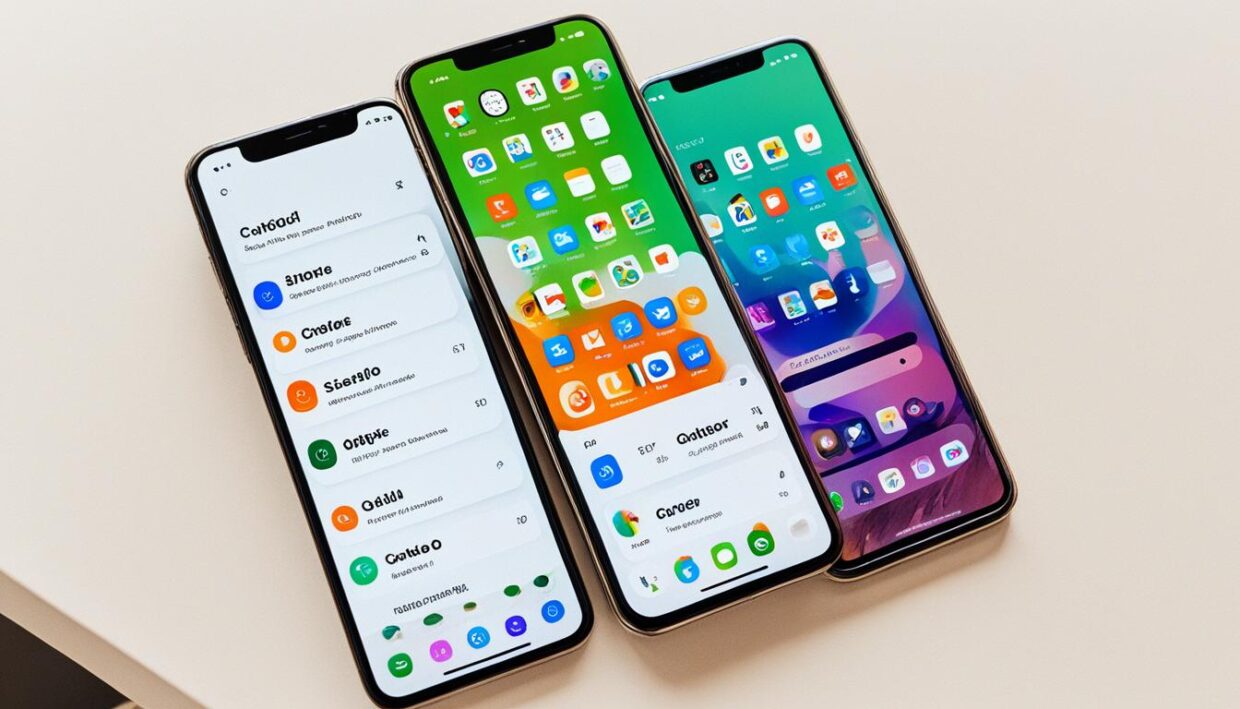
Wireless Technology: 4G and 5G
The evolution of wireless technology has transformed how people use mobile devices, with 4G and 5G leading this charge. While 4G LTE has served as a global standard for wireless broadband, 5G aims to boost capabilities significantly. It targets download speeds up to 10 Gbps, a substantial upgrade compared to 4G’s maximum speeds of 1 Gbps. These enhancements cater to the growing demand for faster mobile data speeds.
Latency plays a crucial role in user experience, with 5G achieving levels as low as 1 millisecond compared to 4G’s range of 60 ms to 98 ms. This low latency enables seamless streaming, interactive gaming, and real-time communication, pushing the boundaries of what users can expect from their devices. The capacity of 5G networks also allows them to support up to 1 million devices per square kilometer, addressing connectivity challenges that 4G networks often face.
Despite its impressive goals, 5G is still in its initial rollout stages, and not all targets have been met. Coverage limitations can affect users, particularly in less developed areas. Understanding the balance between current infrastructure and the increasing demands for mobile data speeds remains essential for prospective buyers contemplating a 5G smartphone.
As 5G expands, it is worth assessing whether the potential benefits justify the switch from 4G. For many users engaged in high-bandwidth activities, upgrading will likely prove advantageous. As the technology continues to evolve, consumers will find new capabilities that redefine wireless technology.

Camera Performance and Photography Features
In recent years, the significance of smartphone camera performance has surged, transforming how we perceive photography. By 2011, more than a quarter of all photographs were taken using smartphone cameras, highlighting the shift towards mobile photography. This trend accelerated further as, by 2015, over one trillion photos were being captured annually, primarily via smartphones. The increasing capabilities of mobile devices led to smartphone sales overtaking those of traditional cameras, with a staggering 10 to 1 ratio by 2013.
Manufacturers recognized this shift and invested heavily in advancements such as larger sensors, higher resolution cameras, and improved image processing. These developments helped bridge the gap in image quality between smartphones and traditional digital cameras, making smartphones a viable choice for everyday photography. Yet, despite these advancements, the small size of smartphone sensors limits their ability to capture light compared to DSLRs, which can collect significantly more light for the same exposure.
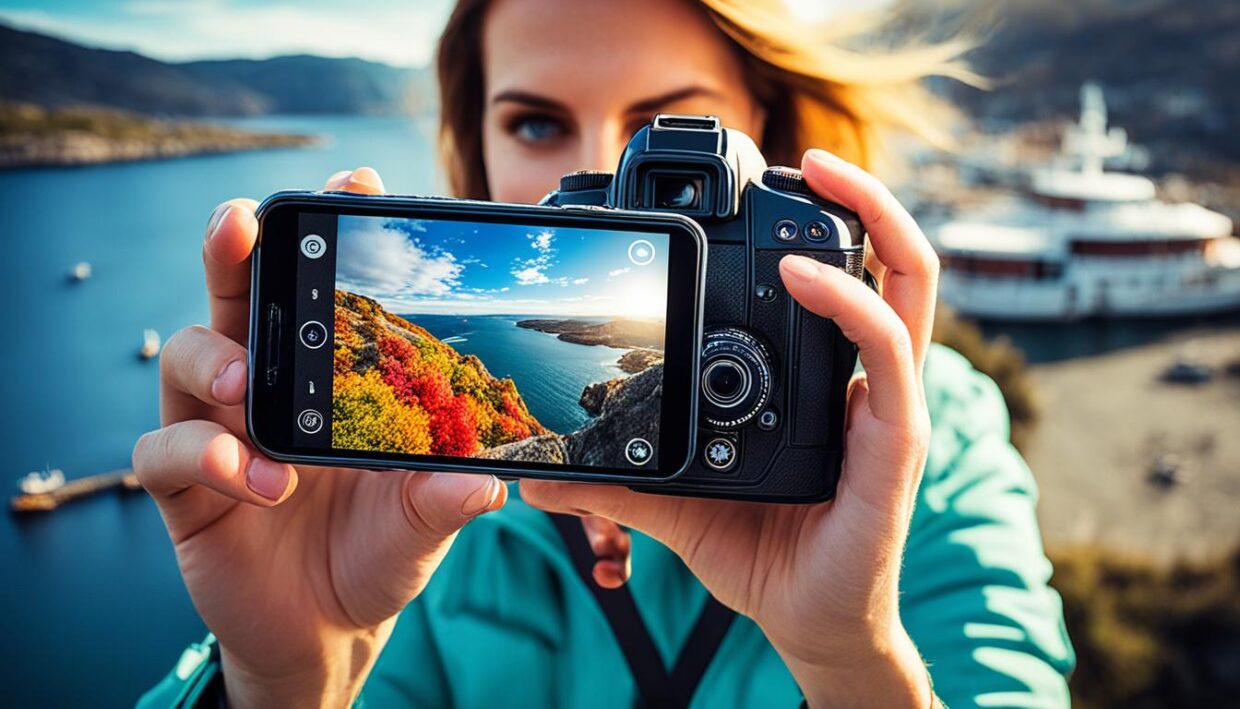
Photography features such as low-light capabilities, multiple lenses, and modes like Portrait and Night have enhanced smartphone camera specs. Users can now capture images in challenging lighting conditions without significant noise, making smartphones practical for various scenarios. Nonetheless, dedicated devices like DSLRs and mirrorless cameras still excel in most areas, particularly in low-light situations and creative control due to their larger sensors and versatile lens options.
A comparison of camera specs reveals this contrasting performance:
| Feature | Smartphones | DSLRs/Mirrorless Cameras |
|---|---|---|
| Sensor Size | Small | Larger |
| Light Collection | Collects 1/20th as much light | Collects significantly more light |
| Creative Control | Limited | Extensive |
| Lens Options | Fixed wide-angle and macro | Interchangeable, including wide apertures |
| Manual Settings | Basic | Full control (ISO, aperture, shutter speed) |
While smartphone photography features have made significant strides, they have inherent limitations that may not satisfy professional demands. Dedicated cameras allow for meticulous adjustments and greater artistic expression, ultimately making them preferred for high-quality creative outputs. Convenience of a smartphone is undeniable, yet for serious photography enthusiasts, the full capabilities of dedicated cameras can significantly enhance the quality and storytelling potential of their images.
Evaluating Battery Life and Charging Options
Understanding smartphone battery life is crucial for any mobile device user. Battery performance directly impacts how effectively a phone operates over time. Regular checks on battery health are essential, especially for Android device owners. These checks can help decide whether it’s time to replace the battery or transition to a new device.
All batteries lose capacity with regular use. Thus, it’s valuable to monitor your phone’s performance regularly. Accessing detailed information about battery usage is straightforward. Within the Battery section of the Settings app, users can find data on status, power consumption over the last 24 hours, and identify which apps drain the battery the most.
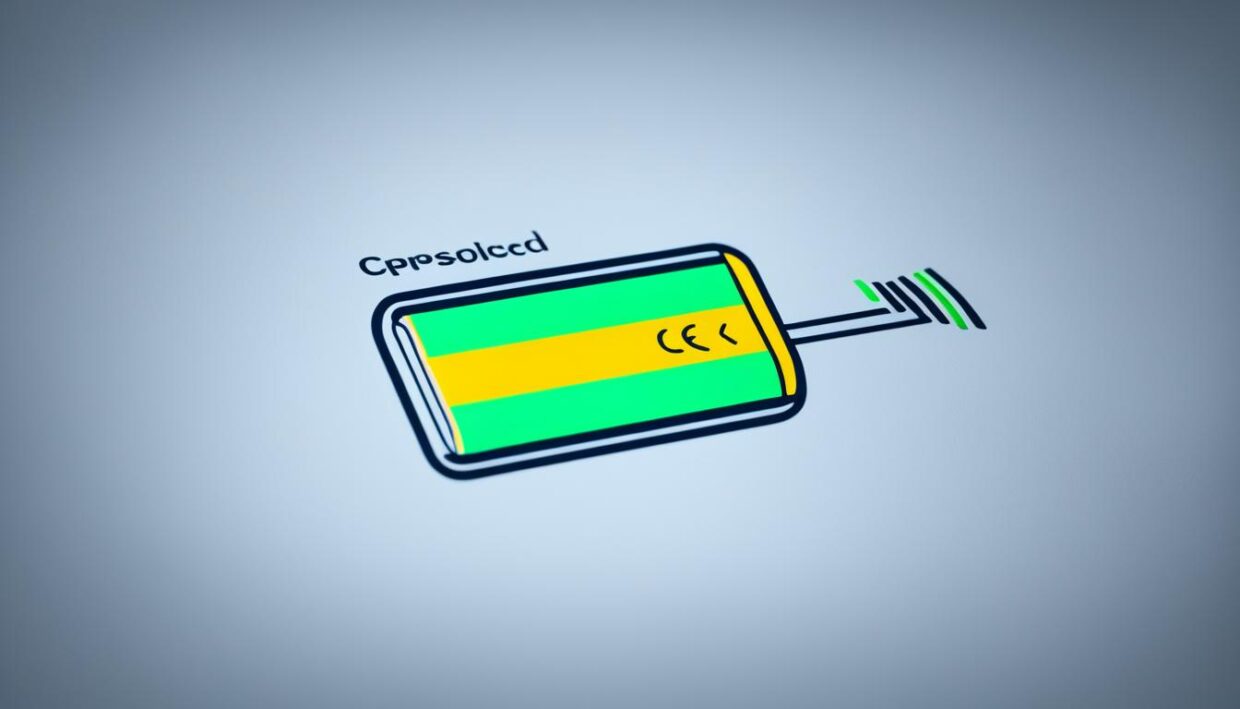
Different brands offer varying levels of battery detail. For instance, phones with MIUI provide insights into battery temperature, indicating that temperatures below 50 degrees Celsius are considered normal. In addition, hidden diagnostic menus can be accessed on many Android devices. Users can easily find this feature by dialing specific codes in the Phone app. Phone brands such as Xiaomi, Google, and OnePlus respond favorably to the *#*#4636#*#* code for battery information.
In Samsung devices, users can check battery health through the Samsung Members app in the Interactive checks section. Third-party applications like AccuBattery, CPU-Z, and Battery are also useful for monitoring smartphone battery life regularly. Many of these apps provide free versions, while allowing upgrades to remove ads or unlock additional features.
Charging options significantly impact overall battery life. Fast charging technology is a popular feature in contemporary smartphones, allowing users to quickly recharge their devices. Furthermore, wireless charging has gained traction, providing convenience without the hassle of cords. Understanding how these features influence battery performance can help users make informed choices tailored to their usage patterns.
Ultimately, considering smartphone battery life and available charging options ensures a smoother daily experience, accommodating individual needs and preferences effectively.
The Importance of Screen Size and Display Quality
Choosing the right cellphone screen size and display quality significantly impacts the user experience. Today, smartphone screens come in various sizes, catering to diverse preferences and usage scenarios. Devices such as the Samsung Galaxy Note series pioneered the phablet category, originally featuring screens larger than 5 inches. This trend continues with models like the Galaxy S8 and S8+, boasting 5.8-inch and 6.2-inch Infinity Displays. These smartphones offer 18 percent more viewable area in portrait mode and 36 percent more in landscape mode compared to previous generations.
As the market evolves, users increasingly gravitate towards larger smartphone screen sizes for enhanced visibility. Such preferences correlate with the rise in application development tailored for expansive displays, as businesses leverage these larger screens for productivity. The iPhone X exemplifies high display quality with a resolution of 2436 x 1125 pixels, delivering a remarkable 462 PPI (pixels per inch). In contrast, many users still prefer common resolutions like 720 x 1280, highlighting the importance of display quality across different screen sizes.
It’s essential to consider personal usage habits when evaluating cellphone screen size. A larger display may be ideal for watching videos or gaming, while a compact device might offer better portability. Research indicates that devices with screen sizes exceeding 9 inches promote landscape orientation usage, which is particularly relevant for media consumption.
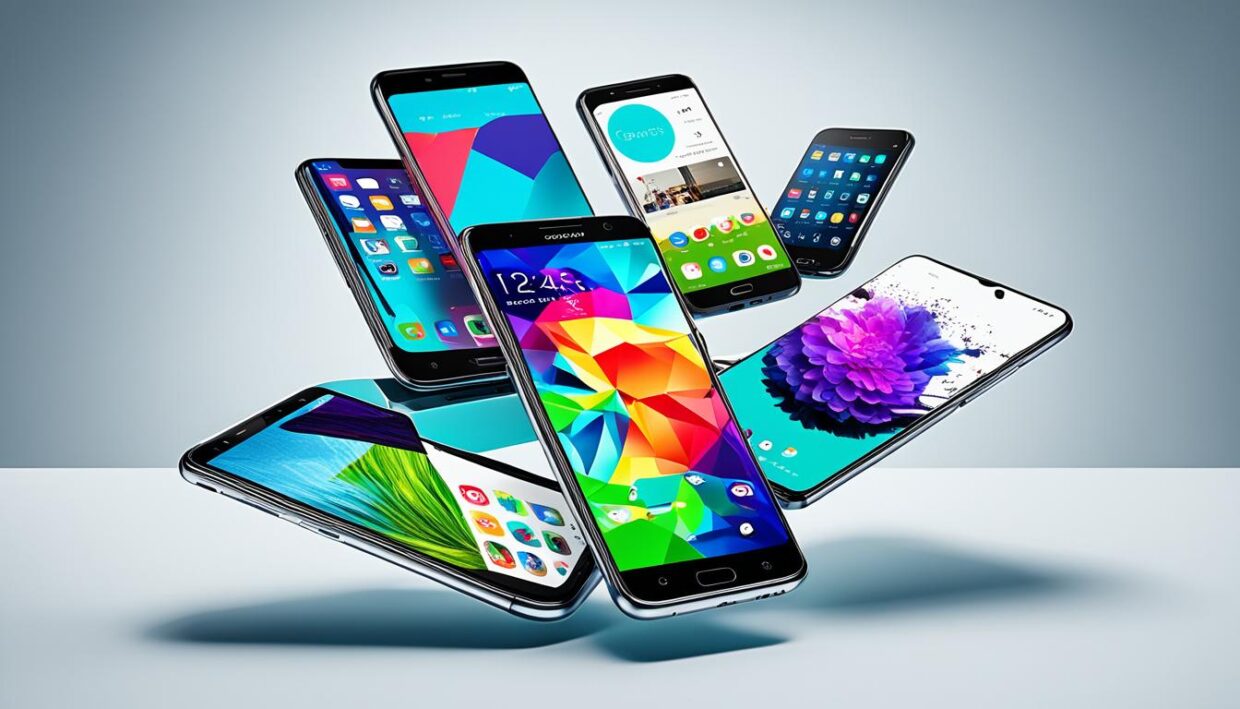
Given the continuous hike in global smartphone users, projected to increase by nearly 500 million by 2028, understanding the significance of optimal screen size and display quality becomes crucial. Ultimately, the perfect balance between a larger screen for visibility and compact devices for ease of use can greatly enhance overall satisfaction with your cellphone.
Processor Performance and Speed
The processor within a smartphone significantly influences its overall performance and mobile speed. Modern cell phone processors are built with advanced architectures that enhance efficiency while managing multiple tasks simultaneously. A processor’s speed is measured in gigahertz (GHz), reflecting how many cycles it can perform each second. As technology advances, having multiple cores—ranging from dual-core to octa-core configurations—has become common, allowing devices to handle more processes at once.
Efficient CPU architecture plays a critical role in determining how well a smartphone can perform day-to-day tasks such as gaming, app usage, and internet browsing. The size of the CPU’s cache is another important aspect, as it stores frequently accessed data, enhancing speed and responsiveness. Manufacturing processes, measured in nanometers (nm), affect both efficiency and power consumption, with smaller sizes generally resulting in better performance.
Various brands excel in smartphone processor performance. Qualcomm’s Snapdragon series, often favored for its 5G capabilities and graphics processing through Adreno GPUs, provides robust options across different price points. Apple’s A-series chipsets consistently deliver strong performance, particularly for those using iOS. Meanwhile, Samsung’s Exynos processors feature customized cores that optimize power usage while maintaining effectiveness. MediaTek chipsets have gained recognition for offering competitive performance, especially in the budget segment, presenting high-end features at a lower price.
To truly understand the performance of cell phone processors, benchmarks like Geekbench and AnTuTu can provide insights. These tools assess CPU effectiveness alongside overall device functionality, but real-world testing remains vital for realistic evaluations. Users should consider how particular processors affect daily activities, such as playing a game or utilizing multiple applications at once.
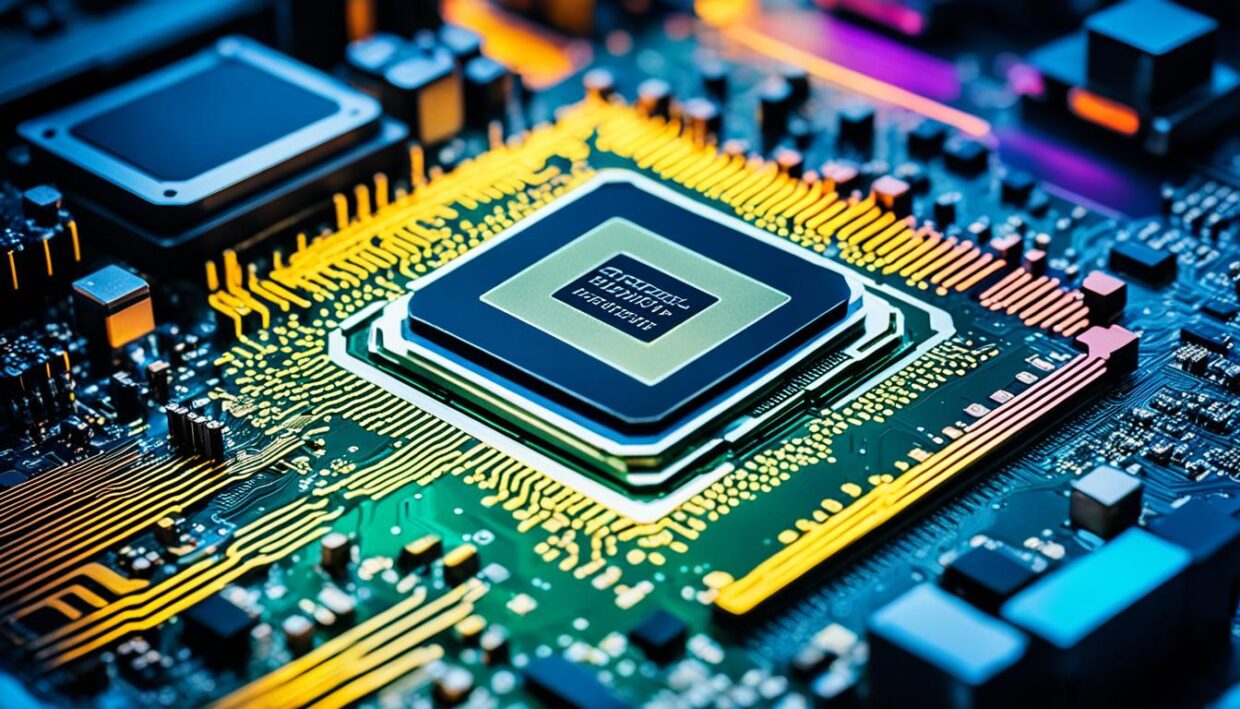 information about the chipset enhances buyers’ perspectives when selecting devices. As processors continue to evolve, keeping a watchful eye on the specifications will ensure you find a smartphone that meets your needs for speed, efficiency, and performance.
information about the chipset enhances buyers’ perspectives when selecting devices. As processors continue to evolve, keeping a watchful eye on the specifications will ensure you find a smartphone that meets your needs for speed, efficiency, and performance.
Storage Options: How Much Do You Need?
When considering cellphone storage options, understanding the smartphone storage capacity available today is crucial. Several factors influence individual storage needs, including the types of content users typically store and their usage habits.

Modern smartphones generally offer multiple storage capacities, typically ranging from 64GB to 1TB. For casual users who primarily engage in talking, texting, and browsing the web, 32GB often suffices. This allows for essential apps and some photos without overwhelming storage.
Photography enthusiasts may require more. Each photo averages around 5MB, meaning 1GB accommodates approximately 200 pictures. For users fond of selfie-taking, 30GB can store roughly 5,000 photos, showcasing how different lifestyles demand varying storage options.
Video recording significantly impacts storage needs. Recording in 4K consumes about 300MB per minute, while Full HD takes around 100MB. Users can expect 10 minutes of Ultra High Definition (UHD) footage to need about 5GB. Furthermore, one hour of UHD video will require approximately 30GB, necessitating higher storage capacity for avid videographers.
Gaming habits also dictate smartphone storage capacity requirements. For beginner gamers, 8GB provides a reasonable entry point. Advanced gamers, who share their gameplay, may want around 32GB or greater for optimal performance and to store multiple games simultaneously.
Many flagship phones, such as the iPhone X and Samsung Galaxy Note 8, boast 256GB of storage. Users should note that system files and pre-installed applications can utilize approximately 5-10GB, making it essential to consider this when assessing total available storage.
For those who opt for expandable memory, features like microSD card slots in Android devices offer flexible solutions. These cards can provide extra storage, catering to users who find built-in options insufficient. In contrast, iPhone users can utilize iCloud Drive for additional storage, typically ranging up to 2TB for a subscription fee.
Ultimately, the goal is to match smartphone storage capacity with individual storage needs, ensuring a smooth and hassle-free user experience. Assessing one’s habits, whether capturing memories, gaming, or simply managing basic apps, leads to better smartphone choice.
Biometric Security Features: Fingerprint and Facial Recognition
Biometric security represents a significant advancement in how we manage device authentication. Two chief technologies in this domain, fingerprint sensors and facial recognition technology, have gained popularity in recent years. Their development has transformed user experiences, offering convenience alongside enhanced security.
Fingerprint sensors utilize unique variations in individuals’ fingerprints for identity verification. Capacitive fingerprint sensors are particularly effective, providing a low false acceptance rate and speedy authentication. They function by detecting the ridges of the fingerprint against a conductive surface, making them resistant to basic 2D copies. Recently, ultrasonic fingerprint ID systems have emerged, using ultrasonic waves to create a 3D image of a fingertip, enhancing protection against potential spoofing attempts.
Facial recognition technology provides fast access to devices by analyzing facial features. While the process is typically instantaneous, it does carry a few drawbacks. For example, facial recognition systems can fall victim to spoofing attacks with images if they lack adequate 3D mapping. False negatives may also occur under varying lighting conditions or when users are wearing glasses or makeup. Despite these limitations, facial recognition continues to evolve and improve over time.
The advantages of biometric security far outweigh the potential challenges. For instance, they offer quicker access compared to traditional passwords or PINs. Moreover, as these biometric methods leverage unique physical traits, they significantly mitigate risks associated with password reuse.
When selecting a cellphone with biometric security features, consider the following:
- Security Level: Assess the robustness of the fingerprint sensors or facial recognition technology in different lighting and environmental conditions.
- User Experience: Look for models that integrate these features seamlessly for a smoother user experience.
- Updates and Support: Ensure the device receives regular software updates to enhance security and functionality.
As mobile biometric security gains traction, it has emerged as a reliable option for identifying users while protecting sensitive information. With its growing importance, understanding both fingerprint sensors and facial recognition technology remains crucial for selecting the ideal smartphone design.
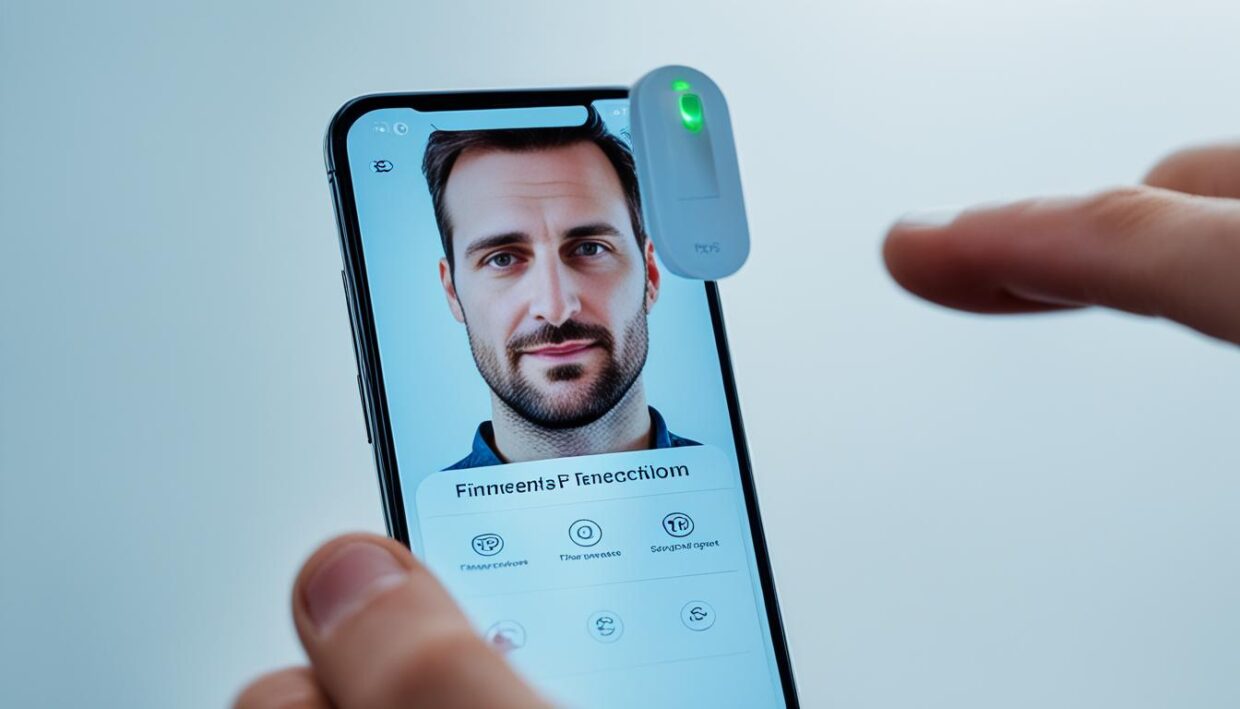
The Rise of Wearables and Mobile Apps
The integration of wearables into the smartphone ecosystem has transformed how individuals manage their health and connectivity. Devices like smartwatches, fitness trackers, and smart rings offer an array of functionalities, enabling users to monitor health metrics and stay connected without continuously reaching for their smartphones. The increasing reliance on mobile apps complements these gadgets, enhancing their capabilities beyond traditional uses.
Smartwatches typically deliver features such as health tracking, notifications, and music playback. Fitness trackers, on the other hand, concentrate on monitoring daily activities and provide essential health metrics. For instance:
- Heart rate monitoring
- Step counting
- Sleep tracking
Moreover, smart glasses present unique possibilities by offering hands-free access to vital information. Users can engage with real-time navigation, news notifications, and even augmented reality experiences. Innovatively, smart clothing is making strides by tracking body movements, mainly targeting the healthcare sector for enhancing posture correction in patients.
This growing interest in wearables aligns with the vital role of mobile apps in fostering user engagement. By providing personalized experiences and ongoing accessibility, mobile apps enhance the usability of these devices. Key platforms, such as Apple Watch (watchOS), Google Wear OS, and Fitbit OS, focus on developing applications that cater to the distinct requirements of wearable technology.
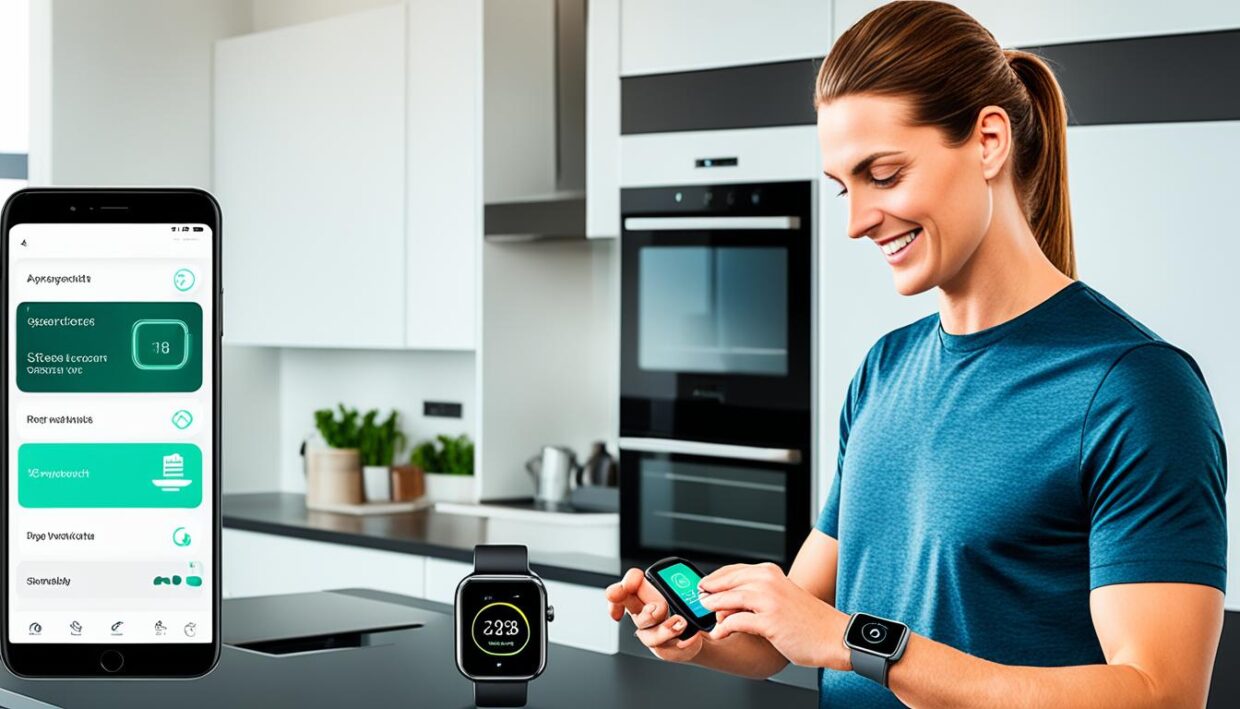
As the smartphone ecosystem evolves, it converges increasingly with health technologies. Smartphones serve as crucial instruments for health monitoring, leveraging IoT connectivity to deliver comprehensive insights while capturing real-time health metrics. This synergy between devices aims to establish a more interconnected health ecosystem.
Nonetheless, challenges arise concerning data privacy and equitable access to advancements in this domain. To ensure that all individuals benefit from these technologies, various solutions, such as smartphone-based rehabilitation programs and ongoing development of user-centered designs, are critical. The future holds promising advancements as wearables become indispensable tools in promoting healthier lifestyles and providing essential health support.
Finding the Right Carrier and Plan
Choosing a cellphone carrier can significantly influence your overall mobile experience. Major cellphone carriers in the U.S. like Verizon, AT&T, and T-Mobile each offer diverse phone plans catering to different user needs. Understanding these options will help you align a plan with your usage habits.
Verizon, for instance, presents several appealing offerings. Their Unlimited Welcome plan starts at $65 per month for one line, while families can pay $120 for four lines. The more robust Unlimited Plus plan climbs to $80 individually or $180 for four lines. Verizon allows subscribers to customize their experience by mixing and matching lines across various plans, which can accommodate different user preferences within the same account.
Promotions and perks can play a key role in your decision. Verizon enhances its phone plans with extras available at around $10 per month each, including the Disney Bundle, Apple One, and additional hotspot data. This flexibility can make a plan more attractive, especially if you can combine multiple perks.
T-Mobile offers competitive options as well. Their unlimited data plan is priced at $75 per month, including benefits like 15GB of hotspot data and a subscription to Apple TV Plus. In comparison, AT&T presents a bulk data plan priced at $25 per month, although speeds get throttled after reaching 16GB of usage.
Consider budget-friendly alternatives like Mint Mobile, which provides plans starting at just $15 per month. Visible stands out with its $25 plan, offering unlimited data on Verizon’s network. For occasional users, options such as Tello with flexible plans ranging from $9 to $25 may be ideal.
In the ever-evolving landscape of cellphone carriers, stay informed about the average smartphone cellular data usage—18 GB per month, with heavy users requiring up to 50 GB. Evaluate which provider can not only support your needs but can also keep you connected effectively in your lifestyle.

Where to Shop: Online vs. In-store
Shopping for cellphones has evolved significantly. Consumers today can choose between online shopping and in-store cellphone shopping, each offering unique advantages. By comparing these methods, buyers can make informed decisions that align with their preferences.
Online Shopping: With projections showing that by 2026, 24% of retail shopping will be conducted online, this method has gained immense popularity. Younger consumers, particularly those aged 18-44, prefer online purchasing, with 28-31% opting for this method. Online retailers often provide enticing discounts, free shipping, and convenient price comparisons. Shipping fees may apply, making it important for shoppers to check terms before finalizing purchases.
In-store Cellphone Shopping: Nearly 41% of Americans favor purchasing cell phones in-store, especially older age groups who appreciate the hands-on evaluation of products. In-store shopping allows immediate gratification, as customers can take their devices home the very same day. Physical visits enable buyers to test products and receive personalized assistance from knowledgeable sales associates.
| Shopping Method | Advantages | Disadvantages |
|---|---|---|
| Online Shopping |
|
|
| In-store Shopping |
|
|
Within various states, preferences differ. For instance, Montana and Utah show a preference for online shopping, while states like Wisconsin and Alaska favor in-store purchasing. Understanding these trends can help consumers navigate their buying preferences effectively.

Shopping Tips: Discounts and Promotions
Finding the best cellphone discounts requires a strategic approach. To start, be on the lookout for promotions during key sales events such as Black Friday and Cyber Monday. These occasions often provide remarkable savings on smartphones, making them ideal times to purchase.
Major carriers frequently offer discounts that can significantly reduce the price of a phone. Some promotions may even allow you to acquire a device for free by spreading the payments over 18 to 30 months. These deals typically include enticing conditions like requiring new lines of service or buy-one-get-one offers, which can be beneficial if you’re planning to switch carriers.
Unlocked smartphone deals can also yield significant savings. These deals may feature small price cuts, especially for popular brands like Samsung, particularly near the end of their one-year refresh cycle. By opting for unlocked models, you gain the freedom to switch carriers whenever necessary, which can lead to better mobile plan options and savings on costly data plans over time.
When shopping, always compare prices and consider both the phone’s cost and the accompanying plan’s price. Retailers like Apple, Samsung, and Best Buy offer upfront discounts on unlocked phones, often tied to trade-ins, allowing you to maximize your savings effectively.
Consider refurbished phones if you’re looking for a cost-effective option. These devices often appear brand new and come with warranties. They provide excellent value without sacrificing quality. Midrange phones priced between $400 and $600 can deliver solid performance, while last year’s flagship models can often be available at a reduced price, offering great features within a lower budget.
| Shopping Tips | Potential Savings |
|---|---|
| Major Carrier Promotions | Up to 50% off devices |
| Unlocked Device Discounts | Flexible savings over time |
| Refurbished Phones | Significantly lower cost |
| Seasonal Sales | Major discounts during holidays |
| Buy-One-Get-One Deals | Significant savings on multiple devices |

Conclusion
As we conclude this cellphone purchasing guide, it’s vital to reiterate that the process of choosing the right cellphone is tailored to individual needs and preferences. In today’s digital age, mobile phones serve not only as tools for communication but also as essential companions for entertainment, business, and learning. From understanding the array of features to evaluating budget options, each factor plays a significant role in determining which smartphone suits you best.
Final thoughts on smartphones emphasize the importance of thoughtful consideration when making your choice. Be sure to weigh performance against cost while keeping your lifestyle and requirements in mind. Whether you’re relying on your device for gaming, mobile payments, or professional use, the ideal cellphone will enhance your daily activities, connecting you to the world in ways that are efficient and enjoyable.
Moreover, as mobile technology continues to evolve, staying informed about the latest advancements will empower you to make a savvy and well-rounded decision. Remember that your cellphone is more than just an object; it’s an extension of your lifestyle. Taking these insights into account guarantees that you not only choose the right cellphone but also maximize its potential in your everyday life.


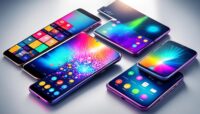
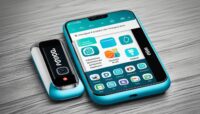
















Be the first to leave a comment